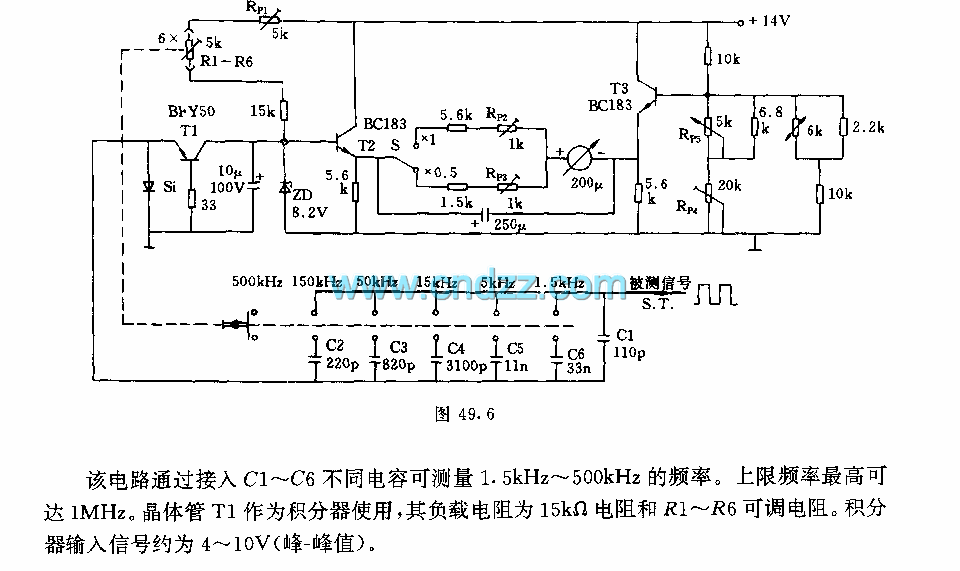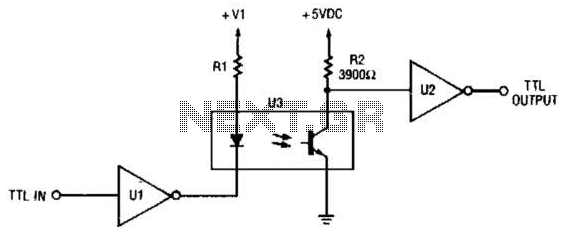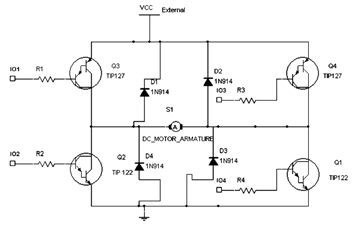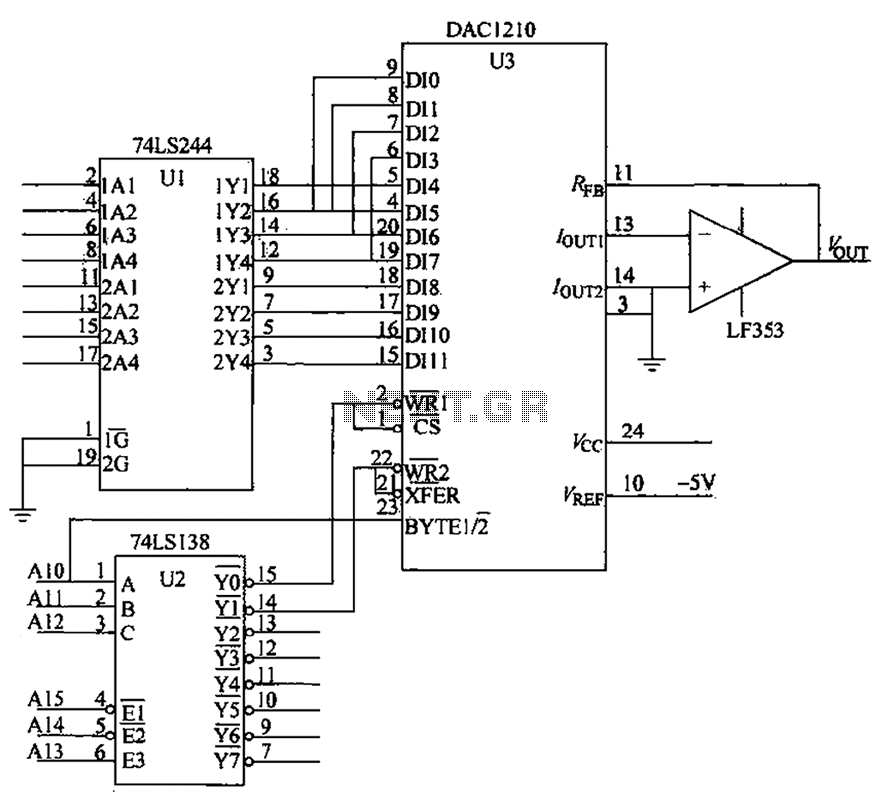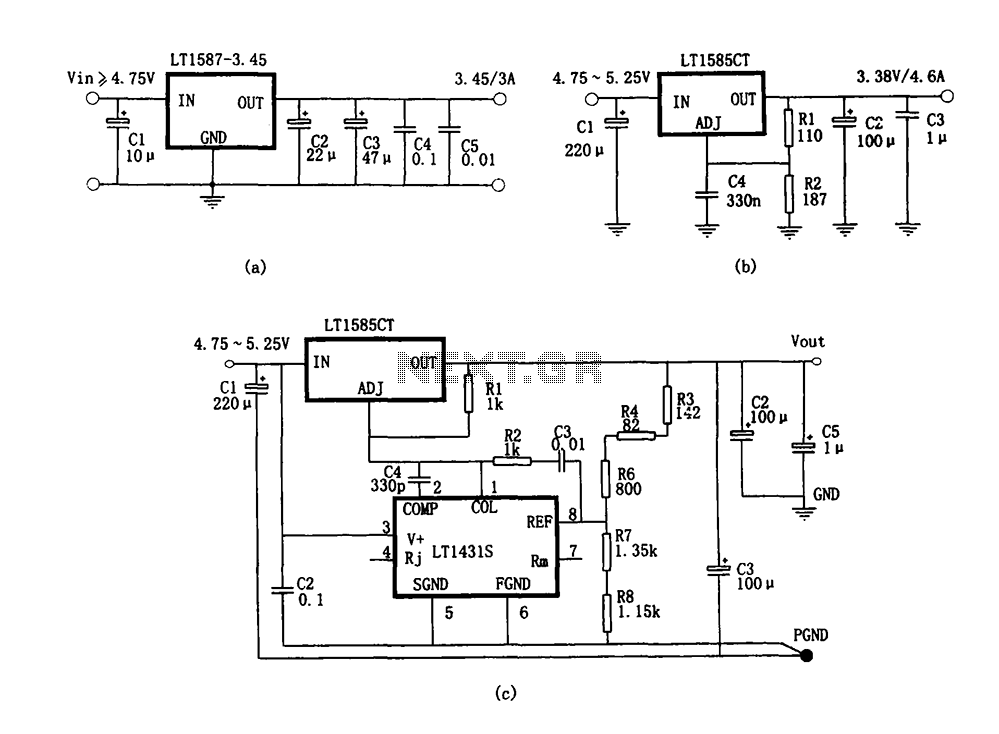
Carbon Mic Replacement To Magnetic Mike Converter Circuit
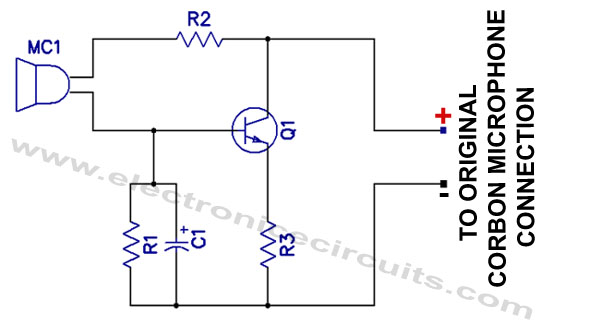
Effective pitching surpasses effective hitting, and a high-quality magnetic microphone outperforms a carbon microphone. This circuit utilizes a single transistor to convert a carbon microphone input into a magnetic microphone output. It is important to note that no ground connection is utilized, even when the circuit is housed in a metal enclosure. The microphone (MIC) is a replacement-type magnetic element that substitutes the original carbon element.
The circuit design involves a single transistor configured as a common emitter amplifier, which is essential for boosting the weak audio signal generated by the carbon microphone. The carbon microphone, known for its simplicity and cost-effectiveness, produces an analog signal that is relatively low in amplitude. The transistor amplifies this signal, enabling it to drive further audio processing stages or directly connect to an audio output device.
The absence of a ground connection is a notable feature of this design, which may simplify the circuit layout and reduce potential grounding issues that can introduce noise. However, it is crucial to ensure that the circuit is properly shielded, especially when housed in a metal cabinet, to prevent electromagnetic interference from affecting the performance of the microphone.
In this configuration, the carbon microphone is connected to the base of the transistor through a resistor, which sets the biasing conditions for the transistor. The collector of the transistor is connected to the power supply, while the emitter is linked to the output stage. The output signal is taken from the collector, which provides a higher voltage signal that corresponds to the original audio captured by the carbon microphone.
The replacement-type magnetic element used in this circuit is designed to provide better frequency response and lower distortion compared to traditional carbon microphones. This enhancement makes the system suitable for various applications, including audio recording, public address systems, and other scenarios where high-quality sound capture is essential.
Overall, this single transistor carbon mic converter circuit is an effective solution for upgrading audio input quality by leveraging the advantages of magnetic microphone technology while maintaining simplicity in design and operation.Good pitching beats good hitting and a good magnetic mic beats a good carbon mic. This one transistor carbon mic converter takes a carbon mic input and converts it to the magnetic variety. Note that no ground connection is used, even if the circuit is built in a metal cabinet. MIC is replacement type magnetic element that is substituted for the or iginal carbon element. 🔗 External reference
The circuit design involves a single transistor configured as a common emitter amplifier, which is essential for boosting the weak audio signal generated by the carbon microphone. The carbon microphone, known for its simplicity and cost-effectiveness, produces an analog signal that is relatively low in amplitude. The transistor amplifies this signal, enabling it to drive further audio processing stages or directly connect to an audio output device.
The absence of a ground connection is a notable feature of this design, which may simplify the circuit layout and reduce potential grounding issues that can introduce noise. However, it is crucial to ensure that the circuit is properly shielded, especially when housed in a metal cabinet, to prevent electromagnetic interference from affecting the performance of the microphone.
In this configuration, the carbon microphone is connected to the base of the transistor through a resistor, which sets the biasing conditions for the transistor. The collector of the transistor is connected to the power supply, while the emitter is linked to the output stage. The output signal is taken from the collector, which provides a higher voltage signal that corresponds to the original audio captured by the carbon microphone.
The replacement-type magnetic element used in this circuit is designed to provide better frequency response and lower distortion compared to traditional carbon microphones. This enhancement makes the system suitable for various applications, including audio recording, public address systems, and other scenarios where high-quality sound capture is essential.
Overall, this single transistor carbon mic converter circuit is an effective solution for upgrading audio input quality by leveraging the advantages of magnetic microphone technology while maintaining simplicity in design and operation.Good pitching beats good hitting and a good magnetic mic beats a good carbon mic. This one transistor carbon mic converter takes a carbon mic input and converts it to the magnetic variety. Note that no ground connection is used, even if the circuit is built in a metal cabinet. MIC is replacement type magnetic element that is substituted for the or iginal carbon element. 🔗 External reference
